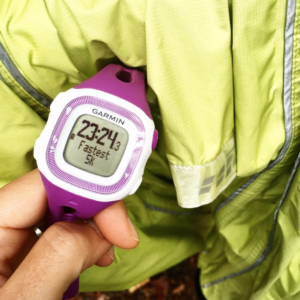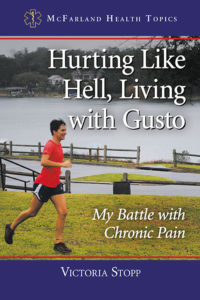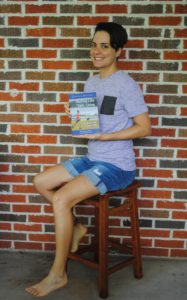
Lyme disease sucks. One of the most frustrating things about Lyme disease in general, and perhaps more so for runners, is the conflicting advice offered by everyone from MDs to herbalists to bloggers. If you’re running with Lyme disease, get ready for an onslaught of “STOP IT RIGHT NOW” from the peanut gallery, combined with other, softer voices that tell you to continue to do what you love. I’ve only been diagnosed with Lyme disease for a couple months, and I’ve already heard more advice (welcome and unwelcome) than I can manage.
All I can speak of is my personal experience. One of my worst, strongest symptoms of Lyme disease is cognitive deficiency. On days when I was able (as in, not exhausted or in too much pain), running literally saved my life. Running became my only outlet for relief. The increased circulation, the endorphins, the outdoor air– I’m sure all these things and more contributed to my improved ability to think on the days I ran. Unfortunately, like many people running with Lyme disease, I hit a point where my physical symptoms became too severe to allow me to run. Reduced mileage wasn’t enough.
Taking a Break from Running
I’m currently in the midst of a break from running. It sucks. A lot. But the muscle spasms in my legs– and I mean every damn muscle from ankle to hip– became so severe that I would wake up in the middle of the night unable to stand up. The pain was incredible. Because the lateral thigh muscles spasmed the hardest, my kneecaps began to track laterally and grind against my femurs. I’m not exaggerating when I say the leg pain became some of the worst, possibly the worst pain I’ve ever felt in my life. There was no way I could run anymore when I couldn’t even walk.
Acupuncture
As my legs got worse, I increased my chiropractic treatment frequency, my foam-rolling time, and my stretching routine. Nothing helped. Not magnesium supplements, not a super-clean diet, not topical creams, not ice, not heat. You name it, I tried it. My coworker is a highly experienced massage therapist and referred me to an acupuncturist. I was doubtful, not of acupuncture in general, but of anything helping me. Lyme disease also dishes out a hearty dose of depression and anxiety along with cognitive disfunction, so my cynicism was at an all-time high. I made an acupuncture appointment with little hope for anything more than another pile of confusing advice.
During the initial evaluation, the acupuncturist told me she wasn’t going to target Lyme disease, but rather would target other problems to help with overall health. Her approach made sense to me, and she immediately noted a major deficit in my circulation. I had no doubt she was right, since I’d been spasming so much and my hands and feet are always ice-cold. She told me that, at least for a while, running with Lyme disease should not be on my agenda. I’m not a crier, but I came close to sobbing in front of her. Running was my last grasp on sanity, or at least it felt that way at the time.
I made a deal with her to stop running for a week (not that hard, in some ways, since my leg spasms were so severe). She wanted more time, but I only agreed to stop for a week. She explained that acupuncture, like most natural medicine that works with the body, takes time. I was essentially undoing her work if I kept depleting myself by running while in such poor health. I protested a bit more but eventually agreed to work with her twice per week. There was nothing to lose besides a little time and a lot of money. (The money is for a different post, but as anyone with chronic pain or chronic disease knows, it ain’t cheap to survive, let alone thrive.)
Progress
Fast forward to three acupuncture treatments later, and I’m doing better. It’s not just acupuncture– I take more supplements than most people will in a lifetime, wear compression garments, and use epsom salts– but I really feel a difference. It’s not fast, definitely not immediate, but something good is happening. My hands aren’t so cold, and my feet are a little less cold. My spasms decreased to the point that last night, for the first time in weeks, I didn’t wake up in agony or use compression garments in the middle of the night.
Of course my goals are to get extremely healthy, feel great, and beat Lyme disease. At this point, though, I want to get back to running. The reality is, I have to stop for a while so I can start again one day soon. I was well enough yesterday to slowly hike for a couple hours at the national seashore near my house, and that’s a major victory. I want so badly to run again, but I’ve had so many setbacks over the past decade that I’m trying to look at this as just one more temporary speed bump.
My next appointment with the acupuncturist is tomorrow and I actually look forward to it. It’s working, and that’s what matters. Anyway, if you’d like more info on herbal aids for the fight with Lyme, I’ve gotten a ton of help from Stephen Buhner’s book, and his website is archived at this link: Buhner Healing Lyme.
Running Again
I’m sure I’ll run again, and probably sooner than later. Lyme disease is rarely completely curable unless caught immediately, so “running with Lyme disease” is pretty much my new reality. Running with herniated discs, running with dystonia, and running with fibromyalgia have all been my reality, so here’s another one for the list. I’ll get back out there, just not tomorrow. In the meantime, I’m going to walk, hike, and do as much as I can to stay strong and relatively healthy. It’s pretty cool to say I have a good acupuncturist on my side now. I’m cautiously hopeful and wildly dreaming of running again.







 Temporary price drop!
Temporary price drop! 






